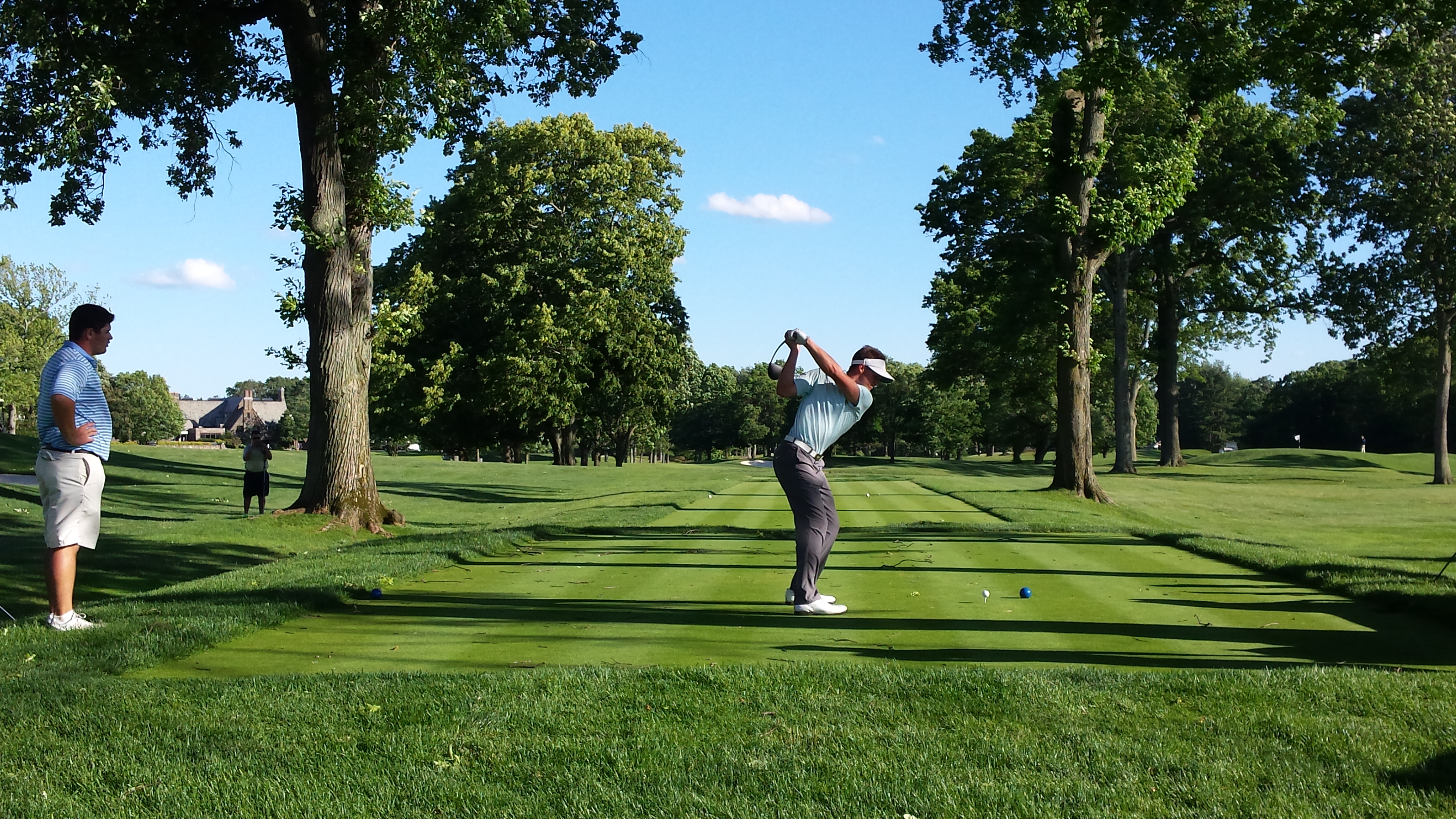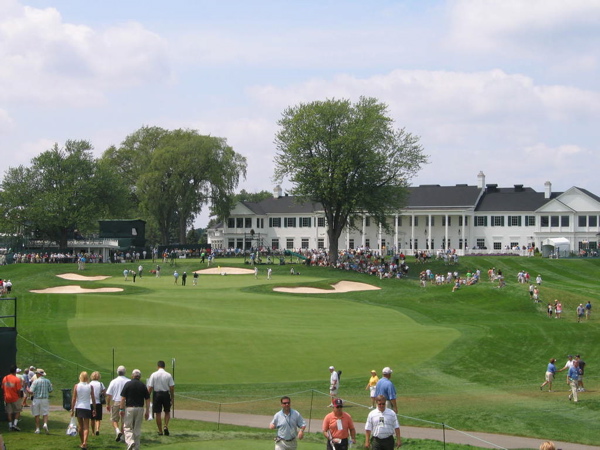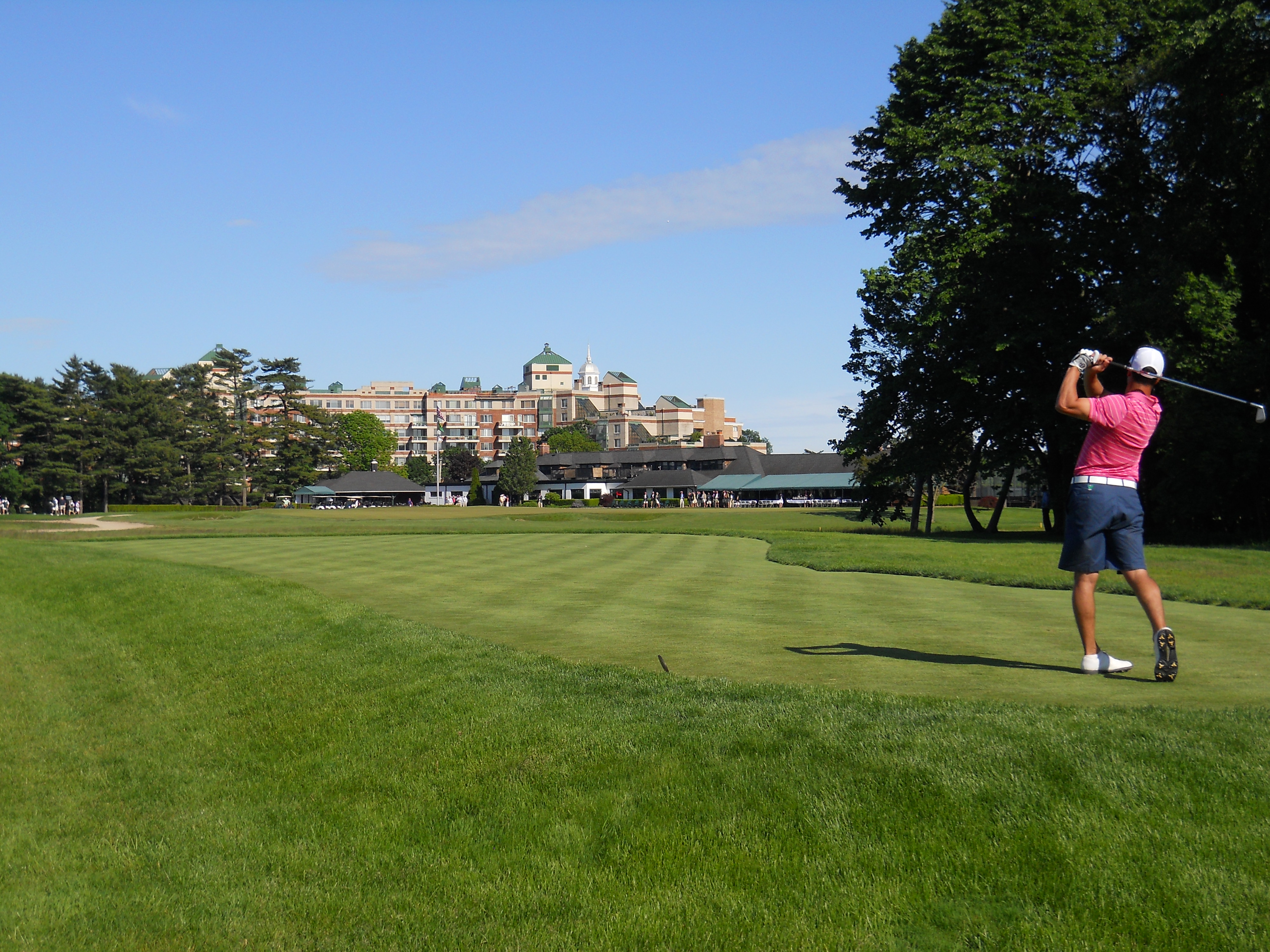OAKMONT, Pa. – “It’s the hardest golf course I’ve ever played,” said pretty much every golfer in the field this week at the 2016 U.S. Open.
Sergio Garcia, Dustin Johnson, Andrew Sullivan, Phil Mickelson: the list was endless.
Mighty Oakmont, Henry Fownes’s knuckle-dragging, slavering-jawed, razor-sharp taloned grassy guillotine is the hardest major championship venue in golf.
It also features on of the most heart-stopping finishing stretches in tournament golf: two brutishly long par 4s, the 500-yard 15th and 485-yard 18th, sandwich a long 240-yard par 3 and, of course, the iconic 17th with its quintessential risk-reward design, the green tantalizingly beckoning players to try for an eagle.
Is Oakmont’s finishing the best U.S. Open closing stretch? Perhaps. Let’s take a look at some of the other fantastic finishes in the informal U.S. Open rotation.
Winged Foot Golf Club (West Course) – Mamaroneck, N.Y.
One of the only other courses that can be spoken of in the same conversation about the hardest major venues in the world, Winged Foot West, the “Graveyard of Champions” as it is known, closes with four absolutely gargantuan par 4s. The 15th is bisected by a creek, so players frequently lay up with a 3-wood so as not to have a downhill lie for a severely uphill approach shot. Thus it plays much longer than the 420 yards listed on the scorecard.
The 16th –- colorfully named “Hell’s Bells” -- is 460 yards and plays back uphill to a narrow green. The drive must carry a long way to reach the knee of the dogleg or else trees may block out the approach.
Trees also play a role in defining the playing corridor on the dogleg-right 17th. The tee shot must land in the fairway or, again, the approach may be blocked. The green is as narrow as No. 16, perhaps only 13 paces across at its narrowest point.
Finally, the 480-yard 18th bends sharply left, then plays to a rolling green with so many fiendish contours, players in final groups of tournaments have been known to five-putt. In fact, the final three players in the 2013 Anderson Memorial Fourball tournament needed 11 putts to finally get one of three balls in the hole.

Winged Foot was also the scene in 2006 of the Icarus-like fall from the sky of Phil Mickelson, who blew a three shot lead with three holes to play when he hit two trees, two bunkers, and garbage can, and the merchandise tent. This was after he spent weeks at the club playing, replaying the final four holes to see if he could negotiate them all in even par.
He’d put his youngest daughter in a wagon and pull her around the course while his wife Amy and the other children walked with him.
Olympic Club (Lake Course) – San Francisco, Calif.
Another course that, like Winged Foot, doesn’t need a single water hazard to be a brilliant test of U.S. Open caliber golf.
“It’s just reverse camber and about 40,000 trees,” joked Art Spender, the Grandfather of Bay Area Sports, and he’s right. With fairways tilted away from the target and eucalyptus and cypress trees grabbing balls with their spindly, sticky branches, straight hitters, plodders and shotmakers defeat long bombers every time at Oly.
The finish is a curious one. A pint-sized, 115-yard par 3 surrounded by sand precedes back-to-back par 5s -- one over 600 yards, followed by one under 500 yards. The finisher is nothing short of brilliant. Just 350 yards, it’s severely sloping green, “IOU” bunker complex and narrow landing area mean pars are great scores and boirdies are downright endangered. Jack Fleck played the stretch 2 under in the final round of the 1955 U.S. Open to catch Ben Hogan, who was so sure he’d won his record fifth U.S. Open, he gave the ball he used to USGA president Joe Dye, saying, “This is for Golf House,” the USGA's home office and museum.
Pebble Beach Golf Links – Pebble Beach, Calif.
With the exception of Tiger Woods in 2000 – a statistical outlier to be sure – Pebble Beach defends par so admirably, venerable golf writer Dan Jenkins dubbed it “Ol’ Double Bogey by the Sea.”
The 430-yard par-4 16th is one of the most underrated holes in golf. A bunker added in 1982 in the knee of the dogleg nearly derailed Tom Watson on Championship Sunday, but he two-putted from 55 feet on “the toughest green on the course, bar 17.” The green has tremendous break side-to-side as well as front-to-back.
No. 17 is one of the great golf holes on the planet, and history gets made there every time the Open comes to Pebble. It plays 220 yards downhill to a tiny hourglass green with a supermodel-slim middle and ringed by rough deeper than a spinach patch, the hole has seen some of the most iconic shots in the history of the game, including Nicklaus’s 1-iron in a gale that hit the flag in 1972 and Watson’s miracle chip in to steal the ’82 Open from Jack, denying him a record fifth U.S. Open title.
No. 18 is a tricky par 5. The ocean beckons to the left, meaning a pulled tee shot washes up in Hawaii. Play too far right and the rough and two clusters of trees come into play. Moreover, all of Pebble’s greens are wildly undulating, meaning the adventure doesn’t end upon reaching the putting surface.
“No. 18 at Pebble is a position hole off the tee and on the second shot. I almost never go for the green in two there,” explained 1982 champion and eight-time major winner Tom Watson in an earlier interview. “I usually lay up with a 5-iron, but laid up with a 7-iron in ’82 to avoid landing in the narrower part of the fairway.”
Good idea as Pebble Beach has rough to rival Oakmont and Winged Foot.
Chambers Bay – University Place, Wash.
Chambers Bay gave us one of the greatest finishes in U.S. Open history in 2015 as Jordan Spieth held off hard charging Louis Oosthuizen and hard-luck Dustin Johnson for the title.
The gorgeous par-3 15th plays towards Puget Sound, with the course's single tree, the Lonely Fir, standing in stately, lonely eminence to the side of No. 16 tee. The 16th is a short, drivable par 4, folowed by the long par-3 17th, each playing along the railway line that hugs the coast.

Chambers ends with a mighty 600-yard par 5, playing up toward the clubhouse. The Chambers Basement bunker on No. 18 has already become a fan favorite after Tiger Woods duffed a 3-wood (duffed a 3-wood!) into it.
BONUS: Oakland Hills Country Club (South Course) – Bloomfield Hills, Mich.
Golf history lives at the intersection of Telegraph Road and 8 Mile Road – where Dire Straits meets Eminem. Oakland Hills has been known as “The Monster” since 1951 when Ben Hogan’s closing 67 netted him his third U.S. Open, successfully defending the title he won so dramatically the year before at Merion. The site of six U.S. Opens and three PGA Championships, it became famous for “double target golf” as Robert Trent Jones called it, since he wasp-waisted the fairways with bunkers that pinch in and he deepened greenside bunkers. It was also where T.C. (two-chip) Chen double-hit a ball in the 1985 U.S. Open and lost a four-shot lead on one hole, the par-4 fifth.
“If Oakmont and Winged Foot are No. 1, then Oakland Hills is 1A,” surmised Peter Jacobsen in a 2008 interview. “It has everything – great greens, interesting holes, and a tough finish, as strong as it gets in golf.”
The finish is as scary as it gets in major championship golf. A short but dangerous 400-yard par-4 15th hole features a bunker in the center of the fairway. (Ben Hogan used to play short of it all the time.) The 16th green is guarded by an idyllic-looking, but damgerous lake that helped doom Sergio Garcia’s chances to win the 2008 PGA, eventually won by Padraig Harrington.
The 17th is 240 yards over gunch and rough to a figure-8 green set obliquely to the line of play, while No. 18 is a par 5 masquerading as 510-yard par 4.

The club may soon undergo a restoration under the direction of Gil Hanse, which will bring back the bunkers and strategies of original architect Donald Ross. The USGA, who once proclaimed they needed more Midwestern venues for the U.S. Open, would do well to bring it back to Oakland Hills, as good a test of golf as can be found.
BONUS: Garden City Golf Club – Garden City, N.Y.
A masterpiece of golf course architecture, Devereux Emmet’s design was enhanced by Walter Travis, who was co-runner-up in the only Open at Garden City in 1902. Travis deepened bunkers and added internal green contours. Half-par holes abound, making it one of the greatest match play venues in the entire world. Indeed, the Walter J. Travis Invitational has been contested there for 107 years.
The 15th, called the “Wall Hole”, features a long stone wall guarding the geen about 60 yards from the putting surface. It’s uphill all the way and 460 yards as well. Long rough guards both sides of the fairway.
After the long par-4 16th guarded by a pond, one of only two water hazards on the course, the short par-5 17th is a chance to gain a stroke. However, with the fairway set directly on the edge of Rockaway Boulevard, the penalty for missing right can be as severe as stroke and distance.

Finally, the gorgeous Eden hole closer, a 170-yard par 3 that was called one of the greatest closing holes in the world by golf architect Tom Doak. Guarded by both a pond and by three bunkers, including the infamous “Travis’s Coffin” bunker front left, and set below the clubhouse with the stately Garden City Hotel standing sentinel over the etire scene, it’s one of the most grand and majestic stages the U.S. Open has ever finished on. Laurie Achterlonie won in 1902 with the highest closing round by a champion, 77 for a four-day total of 302. How times have changed!

